by Guillaume Fabry, Air Journey Director of Flight Operations
In May 2024, Air Journey launched its first journey to Eurasia, a region with limited tourist traffic and even fewer owner-flown aircraft. This 40-day self-flying adventure took six aircraft (a Citation Mustang, two M2s, a CJ3+ and two Phenom 300s) and 12 adventurers on the journey of a lifetime, across several of the “stan” countries.
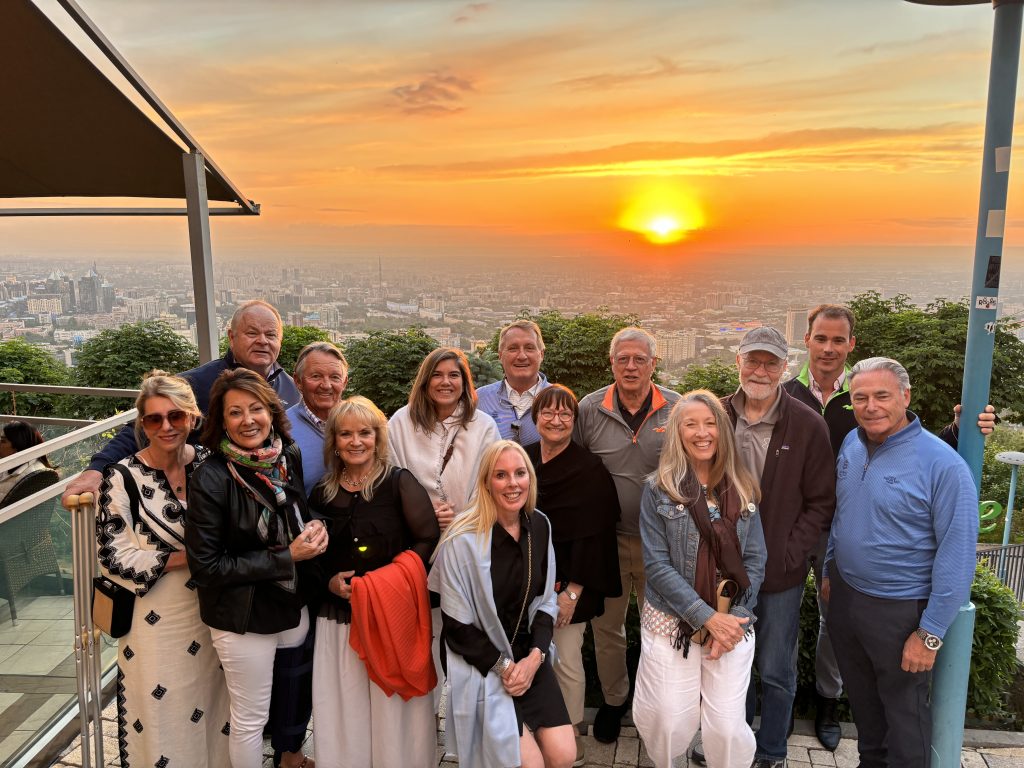
We departed Quebec City, Canada for a fast crossing through Greenland and Iceland before enjoying three days in Prague, Czech Republic. We wandered through charming cobblestone streets, making our way to Prague Castle amid the stunning architecture of the city. After a relaxing stay at a private olive-farm villa turned boutique hotel on the Adriatic Sea in Croatia, we flew over Türkiye on our way to our next destination: Tbilisi, Georgia.
Our flight though Türkiye and over the Black Sea was one of the most interesting experiences we have had as a pilots. This region is known for frequent GPS jamming and spoofing. We were well-prepared and briefed on the likelihood of encountering these issues during our flight. Nonetheless, the first time you experience GPS jamming for hundreds of miles in a foreign country, with Ukraine to the north and Iran to the south, makes for a high-stakes and unforgettable flight.
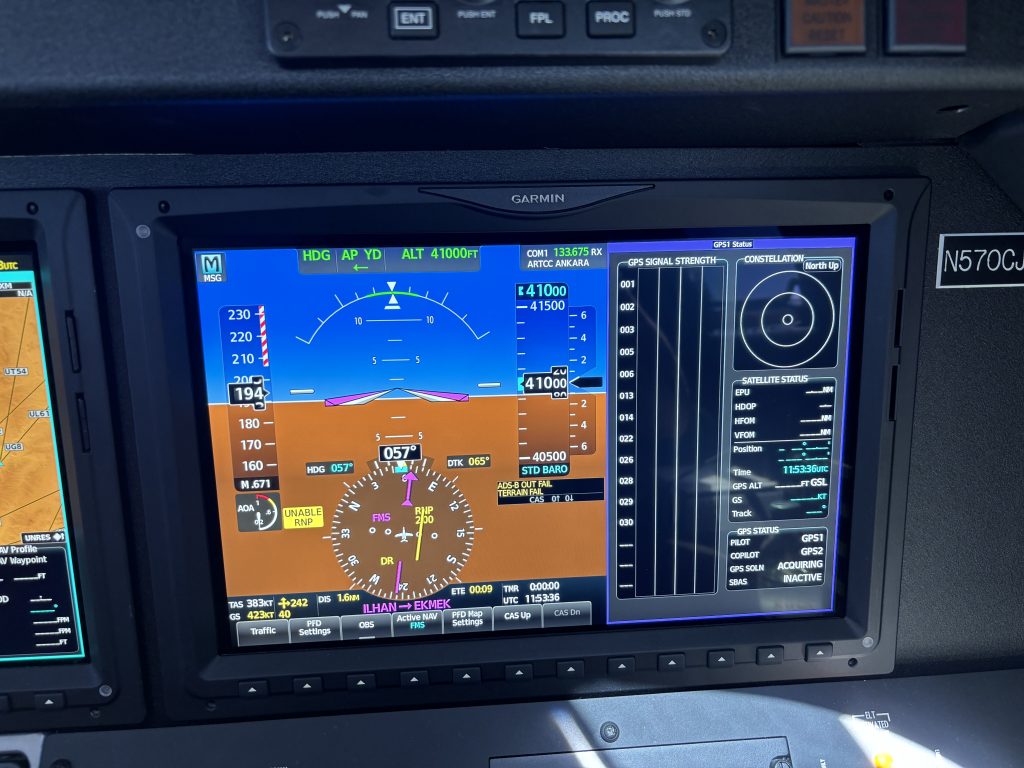
Seeing “DR” for “dead reckoning” and having yellow letters and numbers on our G3000 screens instead of the usual magenta, quickly became the new normal during this flight. As a pilot, while looking at the map, you tell yourself – “as long as we maintain a heading of 090 we should be good to go… ” All jokes aside, we had prepared as thoroughly as possible. We took extra steps, coordinating with the supervisor of Türkiye’s Ankara Control Center to ensure constant radar coverage in case vectors were needed en route. We also reached out to Tbilisi Control to ensure a smooth handoff between Turkish and Georgian airspace.
With thousands of flights over Türkiye daily and the frequent GPS jamming and spoofing, controllers are adept at handling these situations. When you report a “loss of GPS capability” to ATC, they ask if you would like vectors. While the obvious answer is “yes”, controllers ask because larger, long-range aircraft are equipped with IRS systems. IRS, or Inertial Reference System, is a navigation technology that uses accelerometers and gyroscopes to determine the aircraft’s position, velocity, and orientation without relying on external signals like GPS.
This system provides accurate navigation information, especially useful when GPS signals are unreliable or unavailable. Unfortunately, Citations and Phenoms do not have an IRS system onboard.
Before this flight, we practiced tracking inbound and outbound VOR radials to stay on the airways. We were also equipped with iPad satellite receivers that can connect to the GLONASS Russian satellite system, which are less susceptible to jamming and spoofing. Additionally, in preparation for the trip, we consulted with Textron and Embraer about using the DME/DME capability on the G3000. This feature allows the G3000 to continuously update the aircraft’s location by triangulating distances from multiple DMEs in the region. Textron Aviation opted to include this feature in G3000 systems. Both the Citation M2s and the CJ3+ on our journey were equipped with it, and it worked exceptionally well, ensuring we remained on the airways as planned.
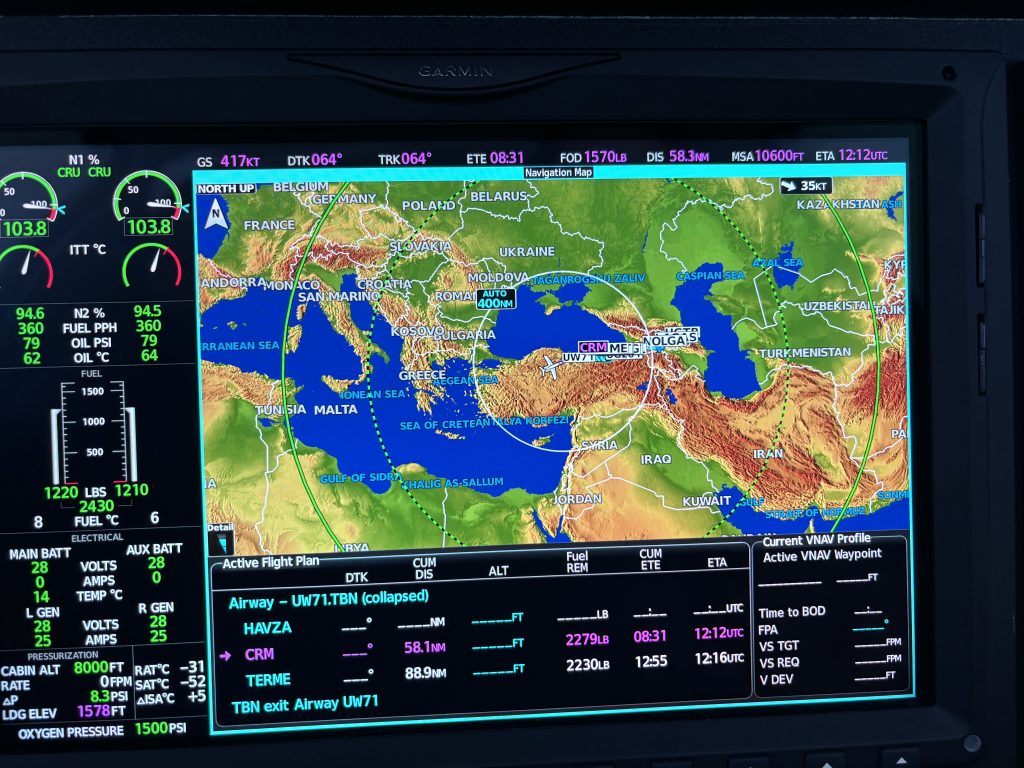
During this flight, one of the Phenom 300s in our group displayed a position in the Atlantic Ocean, off the coast of Sao Tome & Principe – clearly not its actual location. Initially, we suspected spoofing but later realized that the “DR” mode had defaulted their position to 00N and 000W on the MFD. Fortunately, the weather was clear, allowing us to focus solely on the unusual behavior of our avionics. It made for a very interesting flight. We gradually regained GPS1 after crossing into Georgia and GPS2 as we began our descent into Tbilisi, where we received vectors for the ILS approach.
The destinations on the itinerary impressed us all. We spent three days in Tbilisi, Georgia – an amazing city rich in cultural heritage with influences from Persian and Ottoman rule. It shared similarities with European capital cities in its charm and architectural beauty. From there, we flew to Yerevan, Armenia, which was another delightful surprise. It featured beautiful scenery, welcoming people who greeted us with open arms, and a vibrant city life. In an Armenian monastery built into the side of a mountain, we experienced an ethereal moment as a choir of women sang in a room, their voices creating a surround-sound effect that felt like angels were singing directly to us.
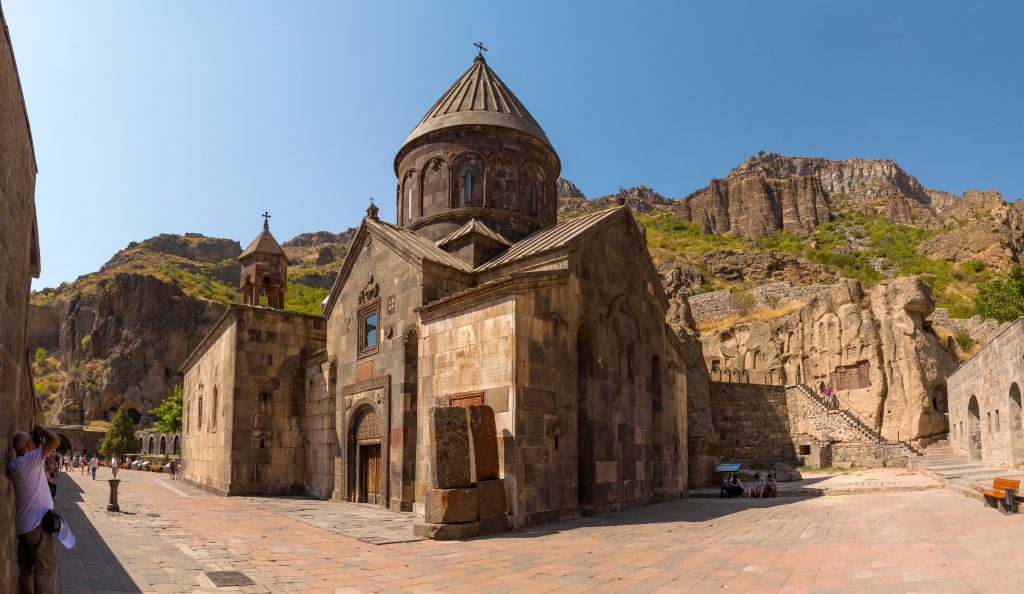
Our next flight was one of the longest of the trip, covering 1,150 nautical miles. We flew over Azerbaijan, Turkmenistan and Uzbekistan, before landing in Dushanbe, Tajikistan. The Citation Mustang benefited from a 60-knot tailwind, allowing the entire group to complete this leg nonstop.
The approach into Dushanbe added another interesting dimension to international flying. Per the approach plates, we had prepped for QFE altitudes, which show “zero” feet over the airport elevation, compared to QNH, showing “mean sea level altitudes” that we are accustomed to, and for meters to be used instead of feet. The G1000 and G3000 have a setting that allows you to display feet and meters simultaneously on the PFD. To our surprise, the controller, noticing six US-registered jets arriving, told us “I will give you altitudes in feet and QNH except if you prefer QFE and Meters?” We gratefully accepted the adjustment, simplifying our approach into a new and unfamiliar airport surrounded by challenging terrain.
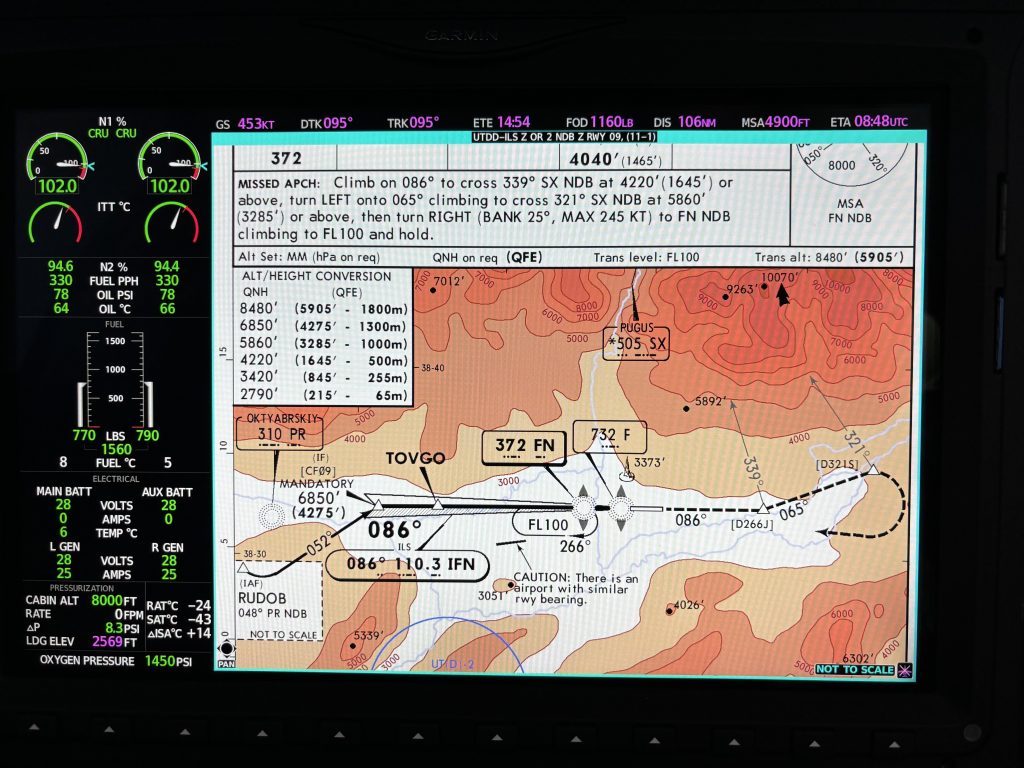
Our two days in Tajikistan were a fantastic discovery, exploring Dushanbe and meeting the welcoming Tajik people. A highlight was visiting a falconry where a comical handler delighted the crowd with his entertaining display.
Next, we flew to Almaty, Kazakhstan, crossing over the breathtaking Pamir Mountains, often called the “Roof of the World” because of their dramatic intersection with five major mountain ranges like the Himalayas. In Almaty, we stayed at the Ritz-Carlton, explored the vibrant city, took in the stunning lakes and mountains, and enjoyed a leisurely lunch at a local winery.
Following Kazakhstan, we ventured to Uzbekistan for three stops: three nights in Samarkand, two nights in Bukhara, and two nights in Khiva. This part of the trip was eye-opening, with warm hospitality, rich Silk Road history, and impressive modern developments. We wandered through incredible mausoleums, mosques, and minarets, all tied to the ancient trade route between China and Europe.
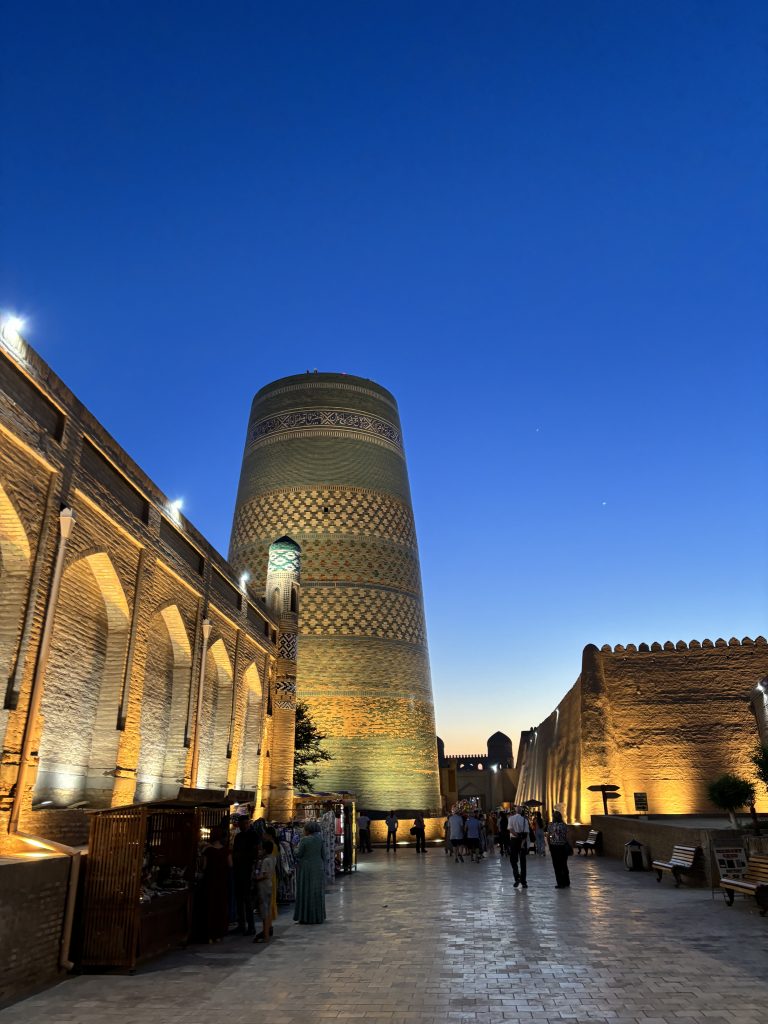
Then it was on to Baku, Azerbaijan, on the Caspian Sea. Baku’s blend of wealth from oil and gas and its striking architecture is reminiscent of some of the world’s most beautiful cities. We stayed at the Four Seasons, exploring both the historic old city, the modern new areas, and historical petrographs in the outskirts.
In Cappadocia, Türkiye, we stayed at the unique Museum Hotel, where our rooms were carved into caves. We began our day at 3:45 a.m. with a sunrise hot air balloon ride, floating above the fairy chimneys and alongside over 100 other balloons in the calm morning air.
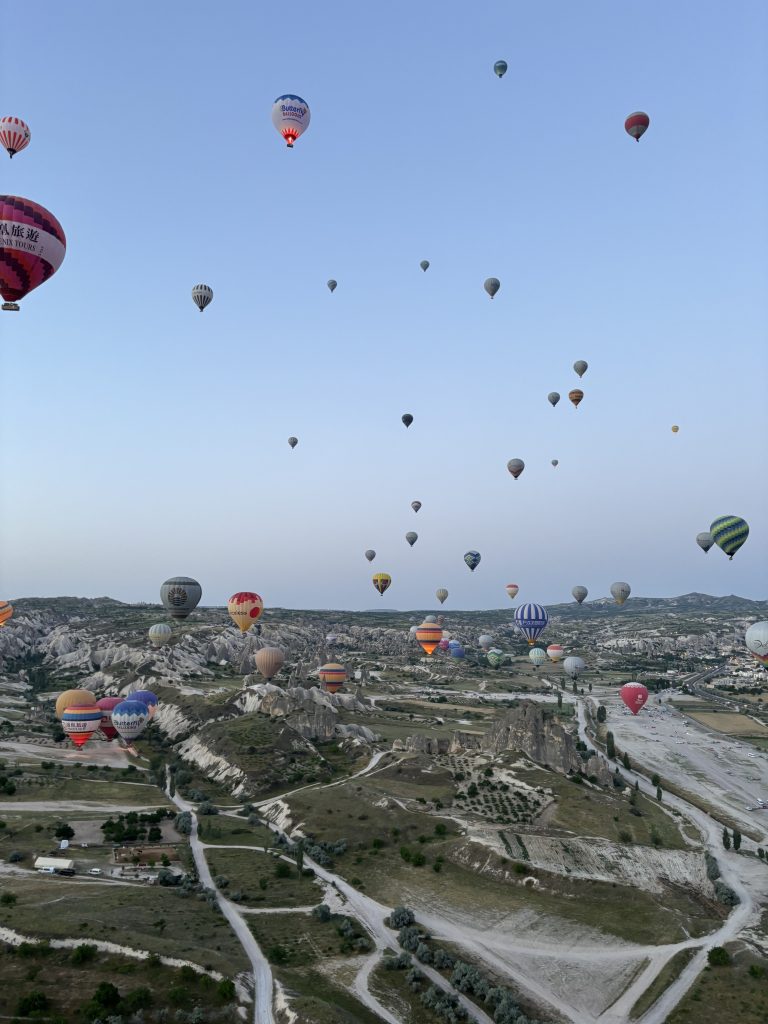
We concluded our Journey with a relaxing three days on the island of Sardinia, Italy, including a boat excursion around the island of Magdalena, followed by two days in the picturesque Cotswolds of England. After touring charming villages surrounded by rolling hills, we had one of our final pilot briefings as we started our trek home.
A total of 15,000 nautical miles over 40 days, it was an unforgettable Air Journey adventure.
List of countries visited:
- Canada
- Greenland
- Iceland
- Czech Republic
- Croatia
- Georgia
- Armenia
- Tajikistan
- Kazakhstan
- Uzbekistan
- Azerbaijan
- Türkiye
- Italy
- United Kingdom
Two Eurasia Journeys will take place in 2025, one departing in May and one in September. Space is limited to six airplanes per trip. Don’t miss this incredible opportunity! More information is available here.